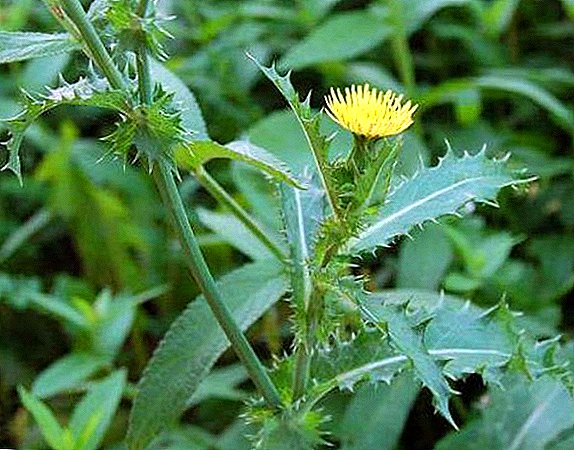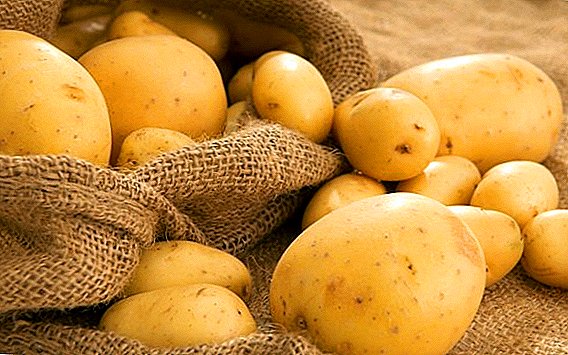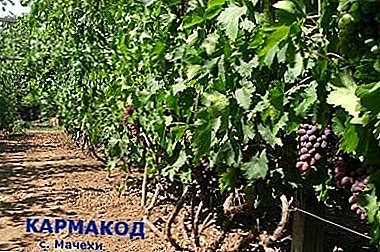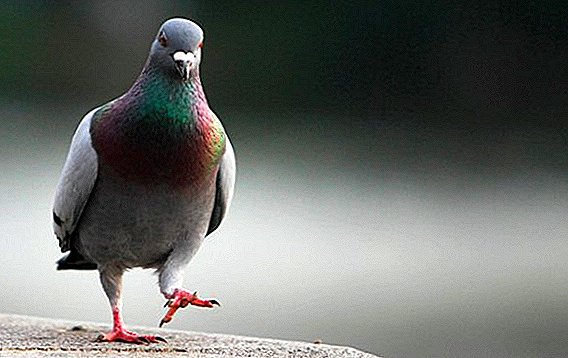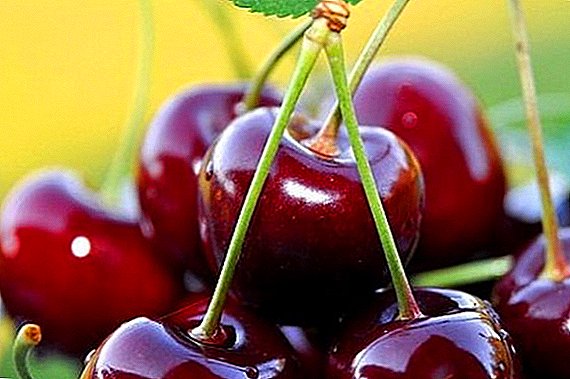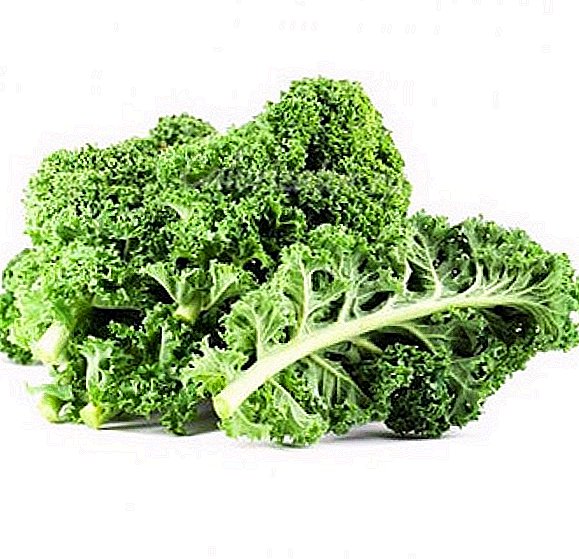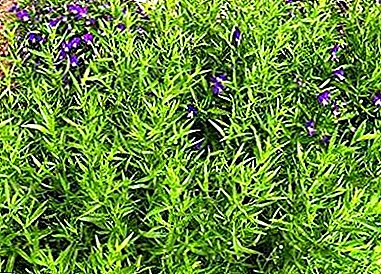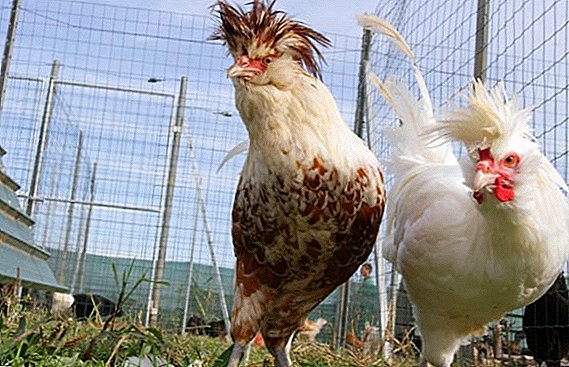 This kind of chickens, like crested, can become both an ornament of the yard, and a breed for breeding. If you decide to acquire just such birds, but have not yet decided on a particular breed, we suggest that you familiarize yourself with the characteristics of the ten most common chickens.
This kind of chickens, like crested, can become both an ornament of the yard, and a breed for breeding. If you decide to acquire just such birds, but have not yet decided on a particular breed, we suggest that you familiarize yourself with the characteristics of the ten most common chickens.
Ukrainian chubaty (Crested)
Appearance According to the official description, the Ukrainian crested chicken should be as follows: a medium-sized head with a strong curved beak so that the chicken can easily peck solid food and grain crops, a broad back and a wide, convex chest. Legs of Ukrainian Crested medium length and moderately strong. In addition, the bird has a lush tail. In general, the bird's skeleton can be called strong and somewhat elongated.  The feather color has several options.among which are white, gray, black, fawn, pockmarked or red.
The feather color has several options.among which are white, gray, black, fawn, pockmarked or red.
Body mass this breed varies from 2 to 3 kg in chickens and from 2 to 3.5 kg in rooster.
Egg production Ukrainian crested is estimated as average. However, the bird consistently carries from 150 to 200 eggs per year, starting from six months of age. Chicken continues to carry eggs for 3-4 years. The weight of each egg is about 50-60 grams, their shell is inherent cream color.
Did you know? This breed exists so long ago that scientists could not determine the exact time of its breeding. However, it was not difficult to find out the bird's homeland - its appearance repeatedly appeared on the canvases of Ukrainian artists.
Temper this breed is quite calm, it is characterized by medium activity, as well as high endurance and unpretentiousness. This simplicity is also related to the food preferences of the bird - it will be what the owners will give it, and if there is a walking yard, they will be able to find their own food for themselves. Another feature of the Ukrainian crested is its resistance to different air temperatures.  In addition to stable socks eggs, chicken pleases his breeding ability: she easily incubates chicks and subsequently takes care of the babies. In order for the Ukrainian crested to be healthy and feel comfortable, it is necessary to periodically wash the drinkers, pour clean water there, change the litter, and also make sand-ash baths for it in order to protect the bird from all sorts of parasites.
In addition to stable socks eggs, chicken pleases his breeding ability: she easily incubates chicks and subsequently takes care of the babies. In order for the Ukrainian crested to be healthy and feel comfortable, it is necessary to periodically wash the drinkers, pour clean water there, change the litter, and also make sand-ash baths for it in order to protect the bird from all sorts of parasites.
Read also about the breeds of hens of Ukrainian breeding (Ukrainian ear-flaps, Borkovskaya bargeste, Poltava clayey) and the best breeds of laying hens in Ukraine.
Russian crested
This breed of chickens appeared in the XIX century, and brought it out so that the bird was hardy enough to survive not only in warm regions, but also in the northern ones.
Appearance the hen is like this: it has a slightly elongated head with a strong, slightly curved beak and rather developed ear rings. The back of the chicken is wide and straight. There are no feathers on the legs, the limbs are well developed. The tail of the Russian Crested also stands exactly and is quite lush, voluminous.  Plumage color can vary from blue, calico, gray, black, black and gold, black and silver, cuckoo and to red, salmon or white. The latter is the most common.
Plumage color can vary from blue, calico, gray, black, black and gold, black and silver, cuckoo and to red, salmon or white. The latter is the most common.
Roosters of the breed are larger than chickens: body mass A healthy rooster is from 2 to 3.5 kg, while a chicken can weigh no more than 2.5 kg.
Learn more about the breed of Russian Crested Chickens.
Carry eggs Russian crested hen begins quite early - at the age of half a year. At the same time for the year she gives a minimum of 160 eggs with a white or cream shell. However, it is important to understand that the egg production of a bird depends not only on its state of health, but also on its age: an adult chicken may not produce as many eggs as a young one.  Temper from Russian crested, it bribes even experienced owners: it is a non-conflicting bird, it calmly makes contact with a person, while it is distinguished by its endurance and resistance to temperature extremes. In particular, the chicken is experiencing a frosty winter, even on the street. The only drawback is inherent in the roosters of this breed: they can react quite aggressively to each other.
Temper from Russian crested, it bribes even experienced owners: it is a non-conflicting bird, it calmly makes contact with a person, while it is distinguished by its endurance and resistance to temperature extremes. In particular, the chicken is experiencing a frosty winter, even on the street. The only drawback is inherent in the roosters of this breed: they can react quite aggressively to each other.
Chickens, on the other hand, easily hatch eggs and raise offspring, because their maternal instinct is well developed.
Chinese silk
The breed appeared more than 700 years ago. In China, chickens were raised to decorate their yards with a strange bird.
Did you know? The appearance of Chinese silk served as a reason for the myth, which states that the breed appeared due to the interbreeding of chicken and rabbit. At least therefore it is impossible to confuse this breed with any other.
So, this breed has a small head size with a small beak, and earrings can be underdeveloped - this is considered normal for this breed. Birds have a short neck, as well as a straight, wide and at the same time short back. The tail of the chicken is barely noticeable, since it is also short. Despite the small size, the build of Chinese silk is quite strong.  But the main feature of the birds are feathers - they are characterized by a weak rod, while the feathers themselves are many. This gives the impression that the hen is covered not with feathers, but with wool, like cats or rabbits.
But the main feature of the birds are feathers - they are characterized by a weak rod, while the feathers themselves are many. This gives the impression that the hen is covered not with feathers, but with wool, like cats or rabbits.
The history of the domestication of chickens dates back several thousand years, and domestic chickens originated from their wild jungle brethren.
Feather coloring may be blue, white, black, yellow, red. In no case should there be a mixture of several colors.
Since the size of the birds themselves is small, weight they are as follows: an adult cockerel will weigh about 1.5 kg, and the hen’s body mass will barely reach 1 kg.  This breed does not differ by good egg production. A hen per year can carry only about 100 eggs, the weight of which will be no more than 40 grams.
This breed does not differ by good egg production. A hen per year can carry only about 100 eggs, the weight of which will be no more than 40 grams.
Chinese silk is light character and look more like human friends than livestock. They are friendly, affectionate, easily contact people and love to receive attention.
Maternal instinct these crested chickens are excellently developed - the hen can sit through both its cubs and the foundlings.  Despite the fact that this breed is bred as a decorative, in many countries, highly valued Chinese silk meat. And in China, some medicines are made from this product.
Despite the fact that this breed is bred as a decorative, in many countries, highly valued Chinese silk meat. And in China, some medicines are made from this product.
It is interesting to get acquainted with the selection of breeds of chickens with red, white, black, blue plumage.
Dutch crested
This breed can still be found under the name of white crested chicken. It is often depicted in the paintings of artists, starting from the XVI century, but the Dutch crested is grown not only to decorate the yard.
Appearance This bird can be described as follows: a compact, but at the same time a well-developed skeleton, an average length of legs, feathers fit well to the body. A characteristic feature is the presence on the head of a bird a white tuft, which looks more like a voluminous fluffy hat. For the most part, the plumage of the Dutch Crested is black, but white or blue is also acceptable.  Body mass representatives of this breed are average: cockerels weigh no more than 2.5 kg, and chickens - about 2 kg.
Body mass representatives of this breed are average: cockerels weigh no more than 2.5 kg, and chickens - about 2 kg.
Learn more about the Dutch white-chilled and other breeds of Dutch chickens.
Egg production birds are also average - a chicken can carry no more than 150 eggs weighing about 45 grams per year. The shell of eggs, as a rule, is white, and the Dutch crested begins to sweep from the age of six months.  Such birds require careful care, because they are demanding to the conditions of detention, as well as prone to disease.
Such birds require careful care, because they are demanding to the conditions of detention, as well as prone to disease.
Important! In addition to demanding, the Dutch crested hens are very jealous and negatively relate to other breeds.
In addition, it is advisable to wash their heads weekly so that the tuft remains snow-white.
Breeding Dutch Crested is not an easy task: the chicks have a very weak immunity, which is why most of the newborn chickens die. Breeding of birds is possible only with the careful care of both adults and chickens.
Polish cat
Today, this breed is not too popular, but it was on its basis that Dutch crested chickens appeared. As for the Polish breed, it can be found in some rural areas of Europe.  Appearance the bird has the following: a medium-sized head, a short beak, a straight back of medium length and a well-developed bulging chest. The tail of the bird is fluffy, the legs are of medium length. The color of the feathers is usually red.
Appearance the bird has the following: a medium-sized head, a short beak, a straight back of medium length and a well-developed bulging chest. The tail of the bird is fluffy, the legs are of medium length. The color of the feathers is usually red.
Body mass Polish crested is about 3 kg in an adult: this applies to both roosters and hens.  This breed can carry eggs only during the warm months: the number is about 125 eggs.
This breed can carry eggs only during the warm months: the number is about 125 eggs.
The hens of the Polish Greenstock breed were considered a symbol of "Polishness": at one time, the owners who bred them showed their patriotism in this way.
It is not easy to grow these birds, since one of their characteristics is weak resistance to diseases, which is why they need to be carefully looked after in adults so that they are healthy and able to give offspring. For chickens, by the way, even more care is required.  In addition, the Polish crested are fastidious to food, and they are recommended to be fed with food rich in all sorts of vitamins, minerals and protein.
In addition, the Polish crested are fastidious to food, and they are recommended to be fed with food rich in all sorts of vitamins, minerals and protein.
Read also about the breeds of chickens with shaggy paws and curly chickens.
Pavlovskaya
This breed of chickens has a rich history, but its exact origin has not been found out. The distribution of these birds began in the first half of the XIX century, and at that moment Pavlovian chickens became almost extinct. Today, they are quite well known, and their numbers have increased significantly.  Consider how this bird looks like: they are characterized by a small size of a rounded head, a vertically set tuft, a medium-sized beak. Considering the catkins is quite difficult, since their size is small. The hen is characterized by the presence of a short neck and a short torso. The back of the bird is straight and almost vertical, which is why it seems that Pavlovian chickens walk around, bending in water. Chest slightly bulges. The tail of the birds is almost standing. The legs are not long.
Consider how this bird looks like: they are characterized by a small size of a rounded head, a vertically set tuft, a medium-sized beak. Considering the catkins is quite difficult, since their size is small. The hen is characterized by the presence of a short neck and a short torso. The back of the bird is straight and almost vertical, which is why it seems that Pavlovian chickens walk around, bending in water. Chest slightly bulges. The tail of the birds is almost standing. The legs are not long.
Feather color in this breed, as a rule, golden-black, you can also find silver-black.  The body weight of the birds is small: roosters weigh no more than 2 kg, and the chickens weigh about 1.5 kg. Chicken per year can carry no more than 90 testicles weighing about 50 grams. The color of their shell is predominantly white.
The body weight of the birds is small: roosters weigh no more than 2 kg, and the chickens weigh about 1.5 kg. Chicken per year can carry no more than 90 testicles weighing about 50 grams. The color of their shell is predominantly white.
Pavlovsk chickens are very demanding conditions of detention. First of all, this is due to their activity, because the lack of walking and mobility can lead birds to diseases. Because they need to be given the conditions in order to maintain health. But to eat chicken chicken unpretentious and eat everything that offers the owners.  It is important to take into account the aggressiveness of the males of this breed in relation to each other, since it is possible that after one rooster fight you will not be able to count one of your animals.
It is important to take into account the aggressiveness of the males of this breed in relation to each other, since it is possible that after one rooster fight you will not be able to count one of your animals.
The chickens, despite their activity, do a good job of incubating eggs and breeding offspring.
Check out the biggest chickens and chickens with the largest eggs.
Paduan
This breed is known from the XVIII century and continues to exist to this day, pleasing the owners with an aesthetic appearance.
And the Paduans look like this: a medium sized head with a curved beak; the presence of earrings in birds is not necessary. The neck is of medium length, slightly curved, with lush plumage. Thorax well developed, convex. The body of Padua is elongated, the tail is magnificent. Legs short, feathered.  The color of feathers varies from black, silver-black and black with a greenish tinge to golden or blue.
The color of feathers varies from black, silver-black and black with a greenish tinge to golden or blue.
The weight of both cockerels and hens can be from 1.5 to 2.5 kg.
For the year, one chicken can carry from 100 to 120 eggs with a white shell weighing 50 grams.  Paduans often plant as decorative birds, their character is friendly and easy. Birds can easily make contact with humans and, with proper care, can become quite tame. However, occasionally representatives of the breed may begin to be jealous, if you do not pay attention to them. Most Paduan are calm and sociable.
Paduans often plant as decorative birds, their character is friendly and easy. Birds can easily make contact with humans and, with proper care, can become quite tame. However, occasionally representatives of the breed may begin to be jealous, if you do not pay attention to them. Most Paduan are calm and sociable.
The described chickens are completely unable to raise offspring, therefore, the development of chickens will have to be the owners of this breed of birds.
Some breeds of chickens have truly unusual qualities. For example, the hens of cemeni are completely black, the barnevelder chickens have interesting feathers with a double border, and the hens of the araukan carry blue eggs.
Polverara
The appearance of this breed of chickens was registered in the XIV century, but at the moment the number of the breed is rapidly falling.
Polverara has the following appearance: on a small head is a medium, slightly curved beak. the body is very similar in shape to a rectangle, while the chest with the stomach is quite well expressed. Legs of a bird of average length, without plumage.
Feather color may be white or black with green tint.  Body mass roosters reach from 2.5 kg to 3.5 kg, but the chickens are less than twice and their maximum weight is no more than 2 kg.
Body mass roosters reach from 2.5 kg to 3.5 kg, but the chickens are less than twice and their maximum weight is no more than 2 kg.
The chicken starts to run late, approximately at the age of 8-9 months, no more than 130 small eggs weighing up to 45 grams per year can be obtained.
Polverara is an active bird, loving space and lively lifestyle. He gets along well with a man, behaves quite friendly, but may show aggression towards other breeds, therefore it is undesirable to keep these chickens with other crested.
As for breeding polverar, these birds have maternal instinctHowever, it is underdeveloped.
Read also about the breeds of chickens: ornamental, fighting; egg, meat; the most unpretentious, cold-resistant.
Crevker
This breed was actively developing from the 16th to the 20th centuries, and when the breed number significantly decreased, the farmers again began to breed the Krevkers.  Appearance the bird has the following: a medium-sized head, a well-developed back and thorax, a strong, strong body, legs short and without feathers. The color of the feathers is usually black with a turquoise hue.
Appearance the bird has the following: a medium-sized head, a well-developed back and thorax, a strong, strong body, legs short and without feathers. The color of the feathers is usually black with a turquoise hue.
An adult rooster can weigh from 3.5 to 4.5 kg, and a chicken - up to 3.5 kg.
In a year, one chicken can carry about 170 eggs weighing up to 70 grams.  The nature of the birds fairly calm - non-conflicting chickens, friendly, inactive, firmly attached to the owner. Roosters can show aggression.
The nature of the birds fairly calm - non-conflicting chickens, friendly, inactive, firmly attached to the owner. Roosters can show aggression.
Despite the fact that the Krevkers are peaceful and quiet, their ability to breed their offspring is weak. For this reason they will need the help of the hosts.
The tufts also endowed with breeds of chickens, Siberian pedigree, Appenzeller.
Legbar
Feather color this breed is creamy, with brown stripes. Characteristic of this species of medium-sized crested chickens is the head, medium catkins, long neck. Legbar have a flat long back, a convex and well-developed chest. The length of the legs of birds is average.  Adult roosters grow up to 3.5 kg, chickens - up to 3 kg.
Adult roosters grow up to 3.5 kg, chickens - up to 3 kg.
The tendency to carry eggs is high: one chicken can produce up to 200 medium-sized eggs per year.  Character Legbar is quite active, they are mobile, they need a lot of space for walking.
Character Legbar is quite active, they are mobile, they need a lot of space for walking.
Important! In addition, these chickens can fly, which also needs to be taken into account if you plan to make them.
Owners will have to start breeding chicks on their own, since the maternal instinct in chickens is poorly developed.
A variety of breeds of crested chickens will allow after studying their characteristics to choose the right birds for you.


